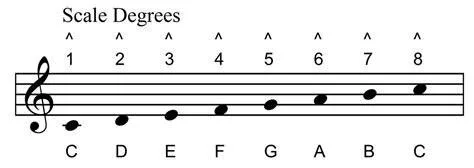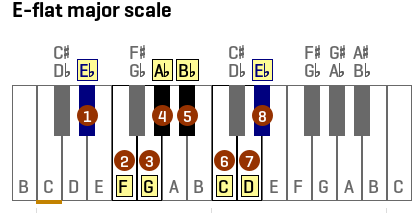Ok! So who can spot the difference here?!
I’m sure you’ve all seen it, but I’ll be captain state the obvious. What the hey-ho is that G# doing there?!
I’ll tell ya.
In a harmonic minor scale we raise the 7th note by a half-step, essentially increasing the interval between notes 6 & 7 to a distance of 3 half-steps. Whoa!
Why??? And why isn’t that G# listed in the key signature like you’d expect?
Both very valid questions! If we can let’s answer it with a practical experiment. At your keyboard, play the note G, followed by the note A. How does that sound? Pretty good right? Pretty pleasing? Well hold onto your harmonics, because now I want you to play G# followed by A…
…Did you do it? Oh my gosh how did it feel? Did you get that level of oomph that we all know and love? In essence, that 7th is raised because it feels so good to resolve to the tonic or central tone from a raised 7th. Remember, the root of the word harmony in music stems from things literally working better together sonically – i.e. harmoniously. So when we see the word harmonic attached to something in music theory, you can usually bet you bottom B♭ that it’s because it will sound straight up pleasing. That’s also the reason that this is the most commonly used form of minor scale in Western music!
Why isn’t the raised 7th in the key signature? Well, technically because it’s not in the key. Remember, in a key signature, the first note we would mark as sharp (where appropriate) will always be F. And the first note we would mark as flat would always be B. Well looky here! G# is neither of those! Therefore it’s place in this scale is as a function of harmony rather than key. Phew. This is some heavy stuff.
The tone pattern for a harmonic minor scale is as follows:
(Tonic) Whole-step, half-step, whole-step, whole-step, half-step, three half-steps, half-step (tonic).
Rad.
And finally,
The Melodic Minor Scale
Probably in my top three variants of minor scales this guy packs a major punch (sorry).
In the melodic minor scale we continue to raise the 7th note of the sequence by a half step, but, we also raise the 6th a half step!
Melodic minor scale, you loco!
But the madness doesn’t stop there! Not by a long chalk! You see on the way up we raise (or sharpen) the 6th and 7th notes by half a step, but on the way down we lower (or flatten) them back to the natural minor sequence. Before you spit out your chicken soup all over the keyboard, let’s take a look at it in the form of a diagram. Just cause we’re so cosy with it, we’ll use the A minor melodic scale:






















